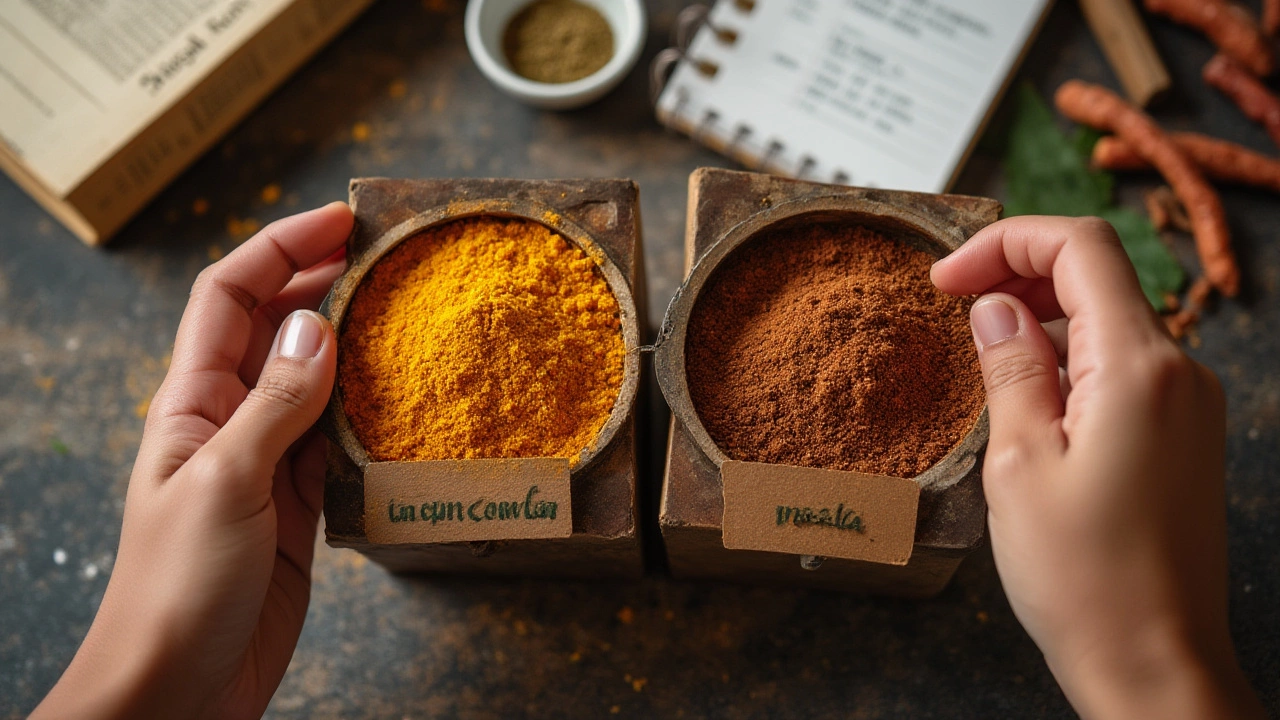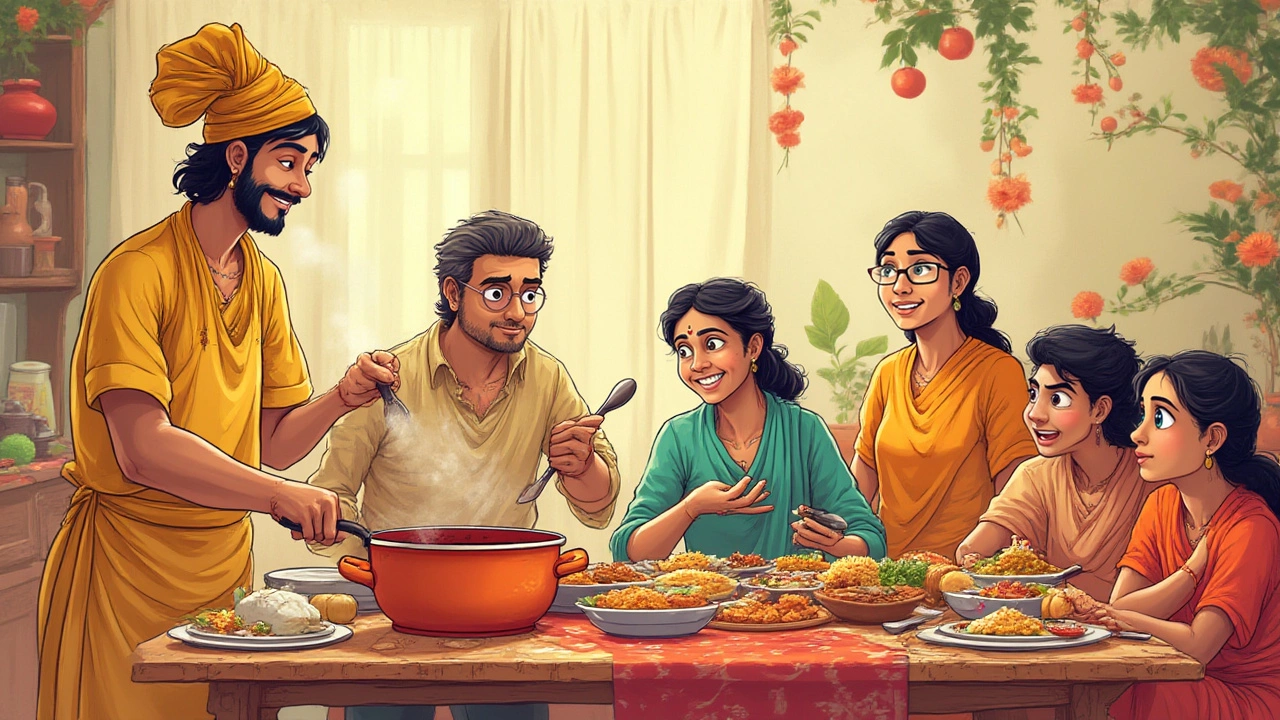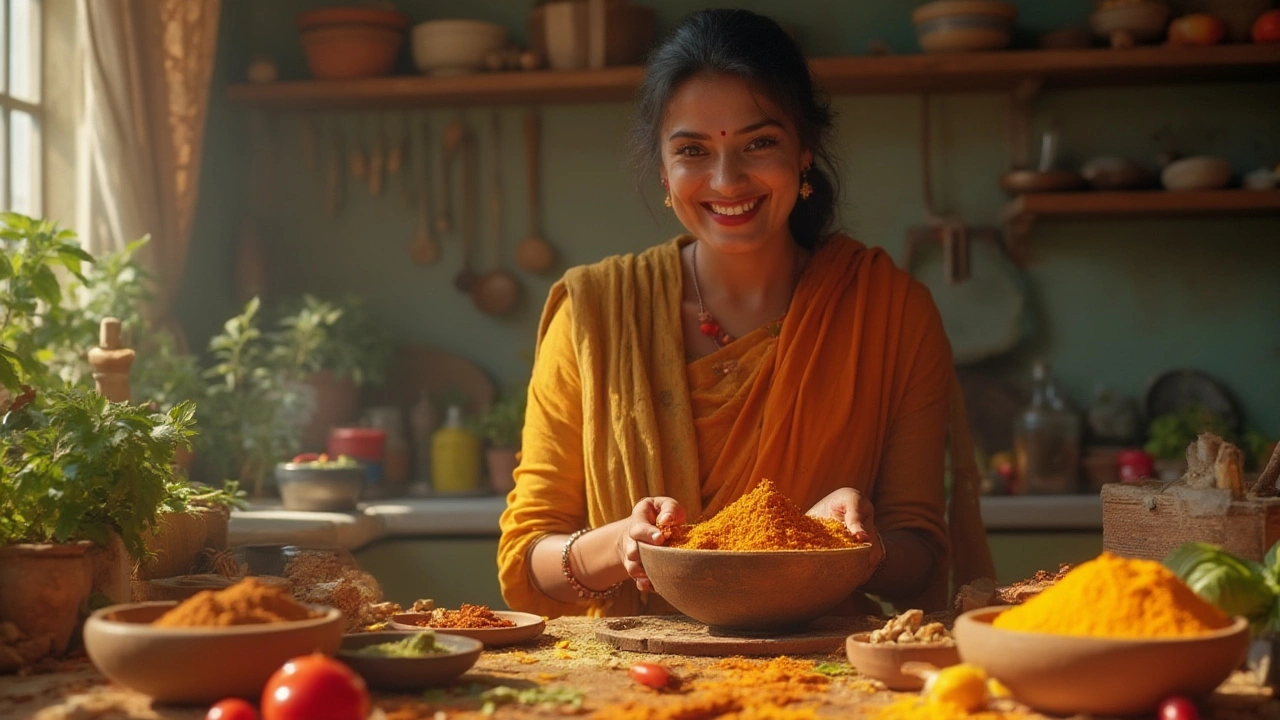Ever pulled out a recipe for butter chicken or chana masala and realized you’re out of the right spice mix? Maybe you stared at that lonely jar of curry powder at the back of your pantry, wondering if you could just use that instead. Here’s the thing: spices and blends like masala and curry powder aren't just about adding flavor—they tell a deeper story about where they come from, how they’re used, and why the taste of the finished dish can change dramatically depending on what’s in your spoon. Let’s crack open these spice jars and spill what’s really going on when you swap curry powder for masala.
What’s the Difference: Curry Powder vs Masala
Curry powder and masala are both blends of spices, but they’re far from identical twins. If you check out the shelves at a typical supermarket in Auckland or pretty much anywhere outside India, you’ll see boxes labeled “curry powder.” These blends were actually created by British traders back in the 18th century, aiming to capture the flavors of Indian food for people back home. Standard curry powder usually blends turmeric, coriander, cumin, fenugreek, and dried chili. Some brands toss in mustard, ginger, or even a little cinnamon or clove for good measure. The result? It’s yellow, a bit earthy, sometimes spicy, and it’s more of a shortcut than a foundation for most traditional Indian dishes.
Now, let’s talk about masala. “Masala” just means spice blend in Hindi and other Indian languages. But there isn’t just one masala—there are dozens! Garam masala might be the most famous, but Indian kitchens have their own blends: chaat masala, tandoori masala, pav bhaji masala, sambar masala, and heaps more. Every family and region has its own secret combos, roasted and ground fresh for that extra punch. Masala blends are usually more complex than curry powder, layering sweet, warm spices (think cardamom, cinnamon, clove, nutmeg) with fragrant and pungent ones (black pepper, cumin, coriander). And unlike pre-mixed curry powder, many home cooks roast and grind the spices right before using them, which adds tons of aroma and depth.
So what makes them different in practice? Curry powder is predictable and mild; masala is bolder, richer, sometimes smoky, sometimes tangy. Garam masala doesn’t even include turmeric (the thing that makes curry powder yellow), so if you swap them straight up, you’ll notice the dish looks and tastes pretty different. Plus, masala is usually added at the end of cooking to brighten things up, while curry powder tends to go in earlier to mellow its flavors.
To give you a side-by-side glance, here’s a quick breakdown:
| Feature | Curry Powder | Masala (e.g. Garam Masala) |
|---|---|---|
| Origin | British adaptation | South Asian traditional blends |
| Main Spices | Turmeric, coriander, cumin, fenugreek, chili | Cumin, coriander, cardamom, cinnamon, cloves, black pepper, etc. |
| Color | Bright yellow | Brown to dark brown |
| Added When | Start of cooking | Usually end of cooking |
| Flavor Profile | Mild, earthy, predictable | Complex, aromatic, warm |
| Used In | Western “curry” dishes | Indian, Pakistani, Sri Lankan cuisine |

Will Substituting Curry Powder for Masala Work?
Alright, here’s what everyone really wants to know: If you’re in the middle of a recipe—say, you’re making tikka masala or aloo gobi—and you realize you’re missing garam masala, can you reach for that jar of curry powder instead?
The short answer is: you can, but there are trade-offs. Flavor won’t be exactly what the recipe intended, because you’re swapping out a unique, aromatic blend for something more generic and often heavier on turmeric. Your dish will probably turn out fine if you just want a hint of spice and comfort. But if you’re chasing those layered notes that make Indian food shine, your curry might end up a bit one-note.
If you do need to substitute, the best trick is to tweak it a bit. Add a pinch of freshly ground black pepper, a dash of cinnamon or clove, or even a little cardamom if you have it. A tiny squeeze of lemon at the end can help brighten a flat-tasting curry powder. But heads up—don't dump in curry powder at the end to replace garam masala. Curry powder’s raw flavor can taste powdery and harsh unless it’s cooked down for a while. For a closer swap: mix 1 tablespoon curry powder with ¼ teaspoon ground cinnamon, ¼ teaspoon ground cloves, and ¼ teaspoon ground cardamom. Does it taste exactly like homemade garam masala? Not quite—but it gets you a lot closer than using curry powder alone.
Sometimes, having a little background knowledge helps. Garam masala is all about warmth and complexity, not heat. There are even scientific reasons for this: a 2022 study by food scientists at India’s Central Food Technological Research Institute found that home-roasted garam masala had 30% more volatile aromatic compounds than commercial curry powders. That means fresh masala hits your nose with stronger, more complex spice smells—literally tickling your brain’s flavor sensors.
People expect certain flavors in classic Indian dishes. No one expects butter chicken to taste like British-style curry. That said, if you’re cooking as a family on a weeknight, don’t let a missing ingredient stress you out. If you’re after an authentic taste, though, curry powder just doesn’t quite cut it. There’s nothing wrong with experimenting! Auckland’s Indian grocers stock heaps of different masala blends. Next time you’re shopping, grab a small packet and run your own taste test at home—the difference is honestly mind-blowing. A friend of mine swapped curry powder for garam masala in their dal, but everyone could instantly tell something was off. After a second try with real masala, suddenly their kitchen smelled just like a Delhi night market.

Expert Tips for Using Spices and Getting the Best Flavor
Little tips make a massive difference when it comes to spices. First thing? Store your ground spices away from light and heat, or they lose flavor fast. If you can, buy whole spices and grind small amounts yourself—freshly ground cumin or coriander explodes with aroma compared to the store-bought powder. That’s why so many Indian home cooks use a little electric coffee grinder for spices only (no one likes cumin-flavored coffee).
For most Indian recipes, you toast spices in hot oil at the start—this “blooms” the flavors and stops the raw, powdery taste from sneaking into your food. If a recipe says to add garam masala at the end, it means you’re after a last hit of sharp aroma. Adding curry powder that late doesn’t work; it can taste raw or metallic.
Can you make a basic masala blend at home? Totally. Toss together these measurements and it’ll be leagues better than regular curry powder:
- 2 tablespoons coriander seeds
- 2 tablespoons cumin seeds
- 1 tablespoon black peppercorns
- 1 tablespoon cardamom pods
- 2 cinnamon sticks
- 1 teaspoon whole cloves
- 1 whole nutmeg, smashed
Toast the spices in a dry pan until they pop and smell fantastic, then grind them once cool. Besides being way more intense than store-bought blends, this homemade touch secretly impresses everyone at your dinner table.
Looking for a handy rule? If the recipe is British or Kiwi (think Coronation chicken, curried pies), curry powder fits. If it’s North or South Indian, reach for a proper masala. And if you feel brave, play around. Auckland’s got customers from every corner of the world—the perfect place to experiment with old and new flavors. Your local market might even sell “Bengali 5-spice” or “chicken masala” blends—give them a go in unexpected dishes. One chef at a Ponsonby restaurant even sprinkles garam masala on sweet roasted pumpkin. Flavor is all about curiosity, after all.
The big thing to remember? There’s no food police in your home kitchen. Spices are about finding what you love—not passing a history test. Swap things, taste often, and have fun inventing your own mixtures. But when you really want that classic, rich Indian taste, nothing matches a fresh, masala blend—your nose and taste buds will thank you, every single time.
